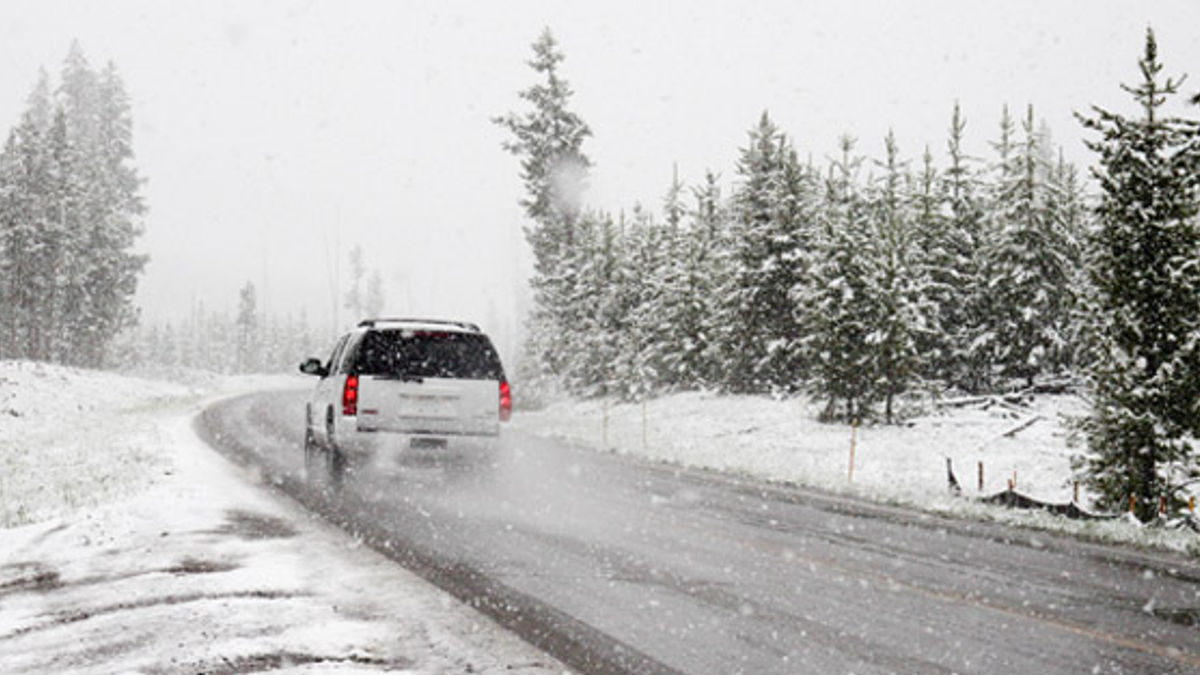Driving on Winter Roads
31 Oct 2022 | Looking After Your Car

Winter can be a challenging time to be on the roads. There are a variety of weather conditions that can make driving more challenging than normal. It’s not unusual to encounter extreme weather that can lengthen your journey time and threaten your safety on the road.
The good news is that it’s possible to plan ahead and prepare yourself for whatever the winter roads have in store for you. So what do you need to consider before setting off?
It’s all a matter of timing
The first question to ask yourself is whether your journey is essential. Travelling in wintery conditions can be dangerous, so if it’s not necessary then it’s often better not to bother.
If you do need to travel make sure you allow extra time for your journey. Driving safely in winter means driving at a much slower speed, and bad conditions can cause you to be diverted. Plan for a long journey: you’ll take away a lot of the stress caused by trying to reach your destination on time.
It’s also important to factor in the time that it will take to actually get your car on the road. In bad conditions you should allow up to ten minutes to clear your windows, lights, and number plate before you set off. Avoid using hot or boiling water and make sure you clear your windscreens fully - it’s not only dangerous to drive with limited visibility, you could be penalised for it.
Plan your journey
If you’re planning a longer journey, it’s important to work out your route in advance. Choose main roads where possible as these are likely to be better maintained and cleared quickly in the event of snow. Focus on safety, not speed, when you choose your route.
In winter, it’s always a good idea to be aware of the current weather conditions and the forecast before you set off on any journey. This will help you to understand whether you are dealing with ice on the road or a likely heavy snowfall.
Driving in winter can be made a lot safer by scheduling long journeys in the middle of the day. Driving during daylight hours increases the chance that the sun has warmed the road and melted any ice or snow. Take care where the road passes beneath trees or below walls as the shadows these obstacles create could help to preserve surface ice.
Take what you need
Driving to and from school on a cold morning doesn’t necessarily require a special winter kit to be loaded into your car in case of emergency. But it is up to you to plan ahead for longer journeys and consider what you might need if weather, or a mechanical problem, leave you stuck.
If you’re taking a road trip, try to ensure you have enough petrol in your car to be able to cope with any diversions that you may encounter. Keep a survival kit on hand. Here are some essentials that the experts recommend, especially if you might encounter snow:
- Ice scraper and de-icer
- Torch and spare batteries or a wind up torch
- Warm clothes and blankets
- Food and water
- Boots
- First aid kit
- Jump start cables
- Shovel
- Reflective warning sign
- Sunglasses (for dealing with snow glare)
- Mobile charger
- Snow chains (make sure you know how to fit and use them)
Drive to the conditions
Being safe on the roads in winter is largely a matter of being sensible and driving to the conditions. The most important thing is to slow down and give yourself plenty of time to react. This is true if you’re driving in snow, ice, fog, wind, or heavy rain.
If you’re driving in ice or snow, there are a couple of key things to remember. It’s important to avoid sudden jerky movements as they will make you more likely to skid. Use a high gear for going up hills and a low gear for going down. Or if you have an automatic transmission you can switch from D [drive] to 2 to limit gear changes and reduce your reliance on your brakes.
Does your car have anti-skid brakes? If so, remember to pump the brakes rather than hold your foot down to avoid skidding in icy conditions. Otherwise, just remember to avoid hard braking by travelling at a low steady speed, maintaining a safe driving distance from other vehicles to give yourself plenty of time to react.
And if you’re driving in fog, rain or snow, remember to dip your headlights for better visibility and increased safety.
Time for an upgrade?
If you regularly drive in wintery conditions and you think it might be time to upgrade your car to one that is better able to cope with the cold weather, contact us today. We can talk to you about car finance that will allow you to manage your budget while choosing a car with features that will help you to stay safe on the roads this winter. Call Enterprise Cars today. Click Here to discuss your options.